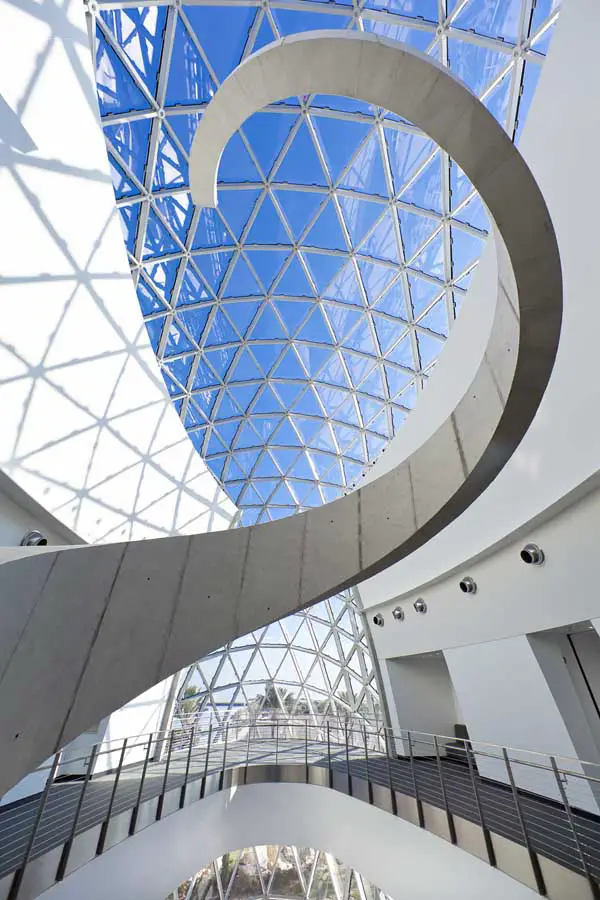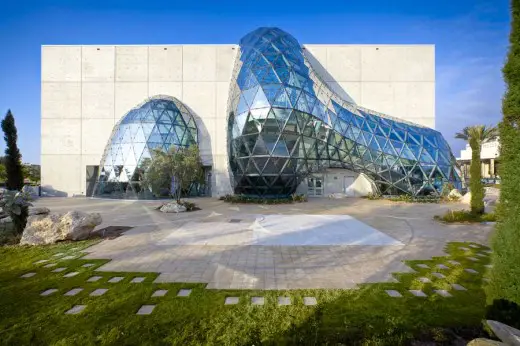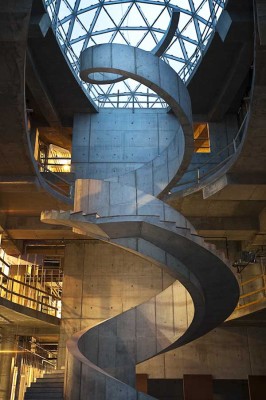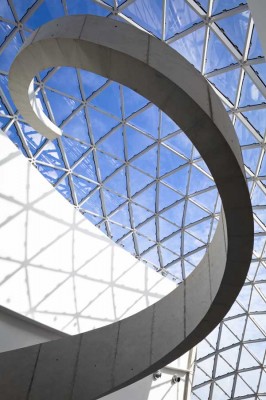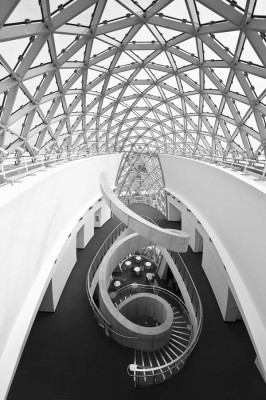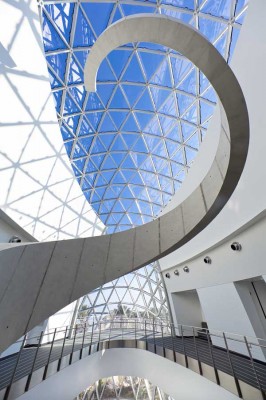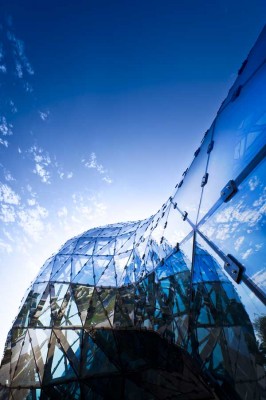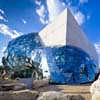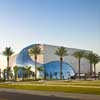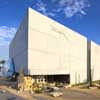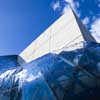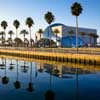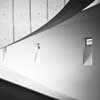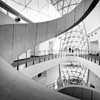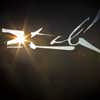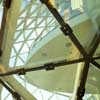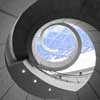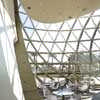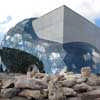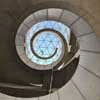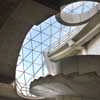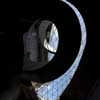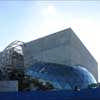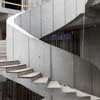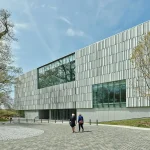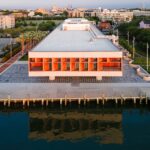Salvador Dali Museum, St. Petersburg Building Architect, Florida Architecture News
Salvador Dali Museum, Florida
St. Petersburg Architecture design by HOK Architects, USA
Apr 5, 2014 + Jan 10, 2011
HOK Designs New Dalí Museum in St. Petersburg, Fla.
New Building Houses More of Salvador Dalí’s Masterworks than any Other World Collection
Address: 1 Dali Blvd, St Petersburg, FL 33701, United States
Phone: +1 727-823-3767
Dali Museum Florida
The new Dalí Museum is located on a scenic waterfront site in downtown St. Petersburg, Fla., the 68,000-sqft structure doubles the size of the original 1982 Dalí Museum, a one-story warehouse. Exhibits include oils, watercolors, sketches, sculptures and other works from a 2,140-piece permanent collection.
Despite the complex processes required to construct the Salvador Dali Museum building, which stands more than 75 feet tall and is adorned by 1,062 unique, triangular glass panels, the $29.8 million building project was completed on time and $700,000 under budget. Construction began in December 2008 and completed in January 2011.
Internationally recognized architect Yann Weymouth, AIA, LEED AP, director of design for HOK’s Florida practice, and led the design team. Interestingly, the Dalí is HOK’s fourth museum project completed in the state in the past 6 years. Other museum projects are HOK’s three new buildings for the John and Mable Ringling Museum and Cultural Complex in Sarasota, the new Hazel Hough Wing of the Museum of Fine Arts in St. Petersburg and the Patricia and Phillip Frost Art Museum at Florida International University in Miami. Additionally, Weymouth served as chief of design for I.M. Pei for both the East Wing of the National Gallery of Art in Washington, D.C., and for the Grand Louvre in Paris.
HOK’s design concept is drawn directly from the building’s purpose. It is inspired both by Dalí’s surrealist art and by the practical need to shelter the collection from the hurricanes that threaten Florida’s west coast.
“Salvador Dalí was a monumental pioneer of twentieth-century art and this is perhaps the best collection of his work in the world,” said Weymouth. “Our challenge was to discover how to resolve the technical requirements of the museum and site in a way that expresses the dynamism of the great art movement that he led. It is important that the building speak to the surreal without being trite.”
A 58-foot-high, right-angled, Euclidean “treasure box” with thick concrete walls protects the art. This unfinished concrete box is disrupted by a flowing, organic, triangulated glass “Enigma” (also the name of a 1929 Dalí painting) that opens the museum to the bay and sky while forming an atrium roof that draws in natural daylight.
“We deliberately exposed the unfinished faces of the concrete to reduce maintenance and to allow it to be a tough, natural foil to the more refined precision of the glass Enigma,” said Weymouth. “This contrast between the rational world of the conscious and the more intuitive, surprising natural world is a constant theme in Dalí s work.”
Dalí was a friend and admirer of Buckminster Fuller, who helped pioneer geodesic geometries and is a hero of Weymouth’s. This is the first use of this type of free-form geodesic geometry in the United States. HOK used building information modeling (BIM) to create three-dimensional models of the glazing forms before Novum Structures imported the model into its proprietary software program and then engineered, manufactured and installed the Enigma and its glass sister, the “Igloo.”
“The flowing, free-form use of geodesic triangulation is a recent innovation enabled by modern computer analysis and digitally controlled fabrication that allows each component to be unique,” explained Weymouth. “No glass panel, structural node or strut is precisely the same. This permitted us to create a family of shapes that, while structurally robust, more closely resembles the flow of liquids in nature.”
A soaring, poured-in-place concrete spiral staircase energizes the 75-foot-high glass atrium and invites visitors to proceed from the ground-level entrance up to the third-floor galleries. The raw concrete spiral flows at its base into the visitor reception desk, with light cable-stayed stainless steel guardrails floating in delicate juxtaposition. The helical stairway design is an allusion to Dalí’s fascination with spiral forms in nature and the double helix of DNA.
In the exhibition galleries on the third floor, seven unique suspended black plaster “light cannons” funnel daylight onto the largest of the Dalí masterworks. The art exhibition spaces are connected by a sculptural gallery that appears to magically land in the center of the ‘egg’ skylight, providing ample light and sweeping vistas overlooking Tampa Bay.
The building protects this priceless art collection from hurricane-force winds and water. Despite the free-form glazing on the structure, the fortress-like structure is designed to withstand the 165-mph wind loads of a Category 5, 200-year hurricane. The roof is 12-inch thick, solid concrete and the cast-in-place reinforced concrete walls are 18 inches thick. Located above the flood plane on the third floor, the art is protected from a 30-foot-high hurricane storm surge. Storm doors shield the vault and galleries. Specially developed for this project, the triangulated glass panels are one-and-a-half inches thick, insulated and laminated, and were tested to resist the 135 mph winds, driven rain and missile impacts of a Category 3 hurricane.
Several sustainable design strategies create energy, water and cost savings. The building is sited to reduce solar load from the low-angled western sun. Two types of solar collectors on the roof heat water for the restrooms and assist in the dehumidification cycle of the air conditioning system. Automated controls turn lights off automatically when rooms are not in use. Water is conserved with low-flow fixtures and all water condensate is recycled back into the system. The building envelope is compact, well-insulated and, with its concrete thermal mass, acts as a heat sink to reduce the temperature highs and lows of a typical day.
HOK is a global architectural firm that specializes in planning, design and sustainable solutions for buildings, communities and organizations. Through its collaborative network of 25 offices worldwide, the firm serves diverse clients within the corporate, commercial, public and institutional markets. HOK is committed to developing resources and expertise to help lead the world toward sustainable communities and building environments. Founded in 1955, the firm’s expertise includes architecture, engineering, interiors, planning, sustainable consulting, lighting, graphics, facilities planning and assessment and construction services.
Salvador Dali Museum St. Petersburg information from HOK Architects
Previously:
Salvador Dali Museum Florida
How does the design relate to the building’s function?
It is situated on a Florida waterfront, which can experience powerful hurricanes. The design is a rigorous and practical solution to the need to protect the collection and exhibit a great collection. The building is constructed of exposed cast-in-place reinforced concrete walls, 18” thick, hurricane resistant up to 165 MPH winds. The art, located above flood plane on the third floor, is protected from up to a Category 5 hurricane storm surge.
The flow of art works within the building, from service dock to the service elevator connects directly to art vault and into the temporary exhibitions and permanent collection galleries. The pathway of visitors and staff throughout the building has been similarly carefully organized for simplicity, efficiency, security and pleasure of experience. Clarity of circulation has been a generator of the plan since the outset of the project.
What makes the project unique?
The design concept is drawn directly from the building’s purpose. The museum will house some of the most important works of Salvador Dalí –the most prolific and influential surrealist the art world has ever known. It is important that the building speak to the surreal, without being trite. A strong, poured-concrete Euclidean “treasure box” protects the art, but is then broken, disrupted, by the flowing, organic, triangulated glass “Enigma”, opens the museum to the bay and sky. It is as though a glittering jewel is bursting from the “treasure box”. This contrast between the rational world of the conscious and the more intuitive, surprising natural world is a constant theme of Dalí’s work and the design is an abstract reference to this aspect of his work.
The glass “Enigma” which bursts from the building and forms the atrium roof and cascades to the ground is the first use of this type of free-form geodesic geometry in the US. Dali was a friend and admirer of Buckminster Fuller, and a geodesic dome crowns Dali’s own museum in Figueres, Spain. But Fuller’s great work was restricted by the technology of his time to platonic solid and great circle geometries, in order to limit the number of different components. The flowing, free-form use of geodesic triangulation is a very recent innovation permitted by modern computer analysis and digitally controlled fabrication, which permits each component to be unique. No glass panel, structural node or strut is precisely the same, and all identified by bar code to facilitate fabrication, shipping and assembly. This has permitted us to create a family of shapes which while structurally robust more closely resembles the flow of liquids in nature.
The soaring poured-in-place spiral stair energizes the glass atrium and connects the ground level entrance to the galleries of the third level. It is also an allusion to Dali’s fascination with DNA, the golden rectangle and the Fibonacci series. It is a structural tour-de-force, with the reinforced concrete spiral functioning as a tensioned spring held at ground level and at the third floor, with the stair treads cantilevered from the central spiral. All wooden form marks and artefacts of its construction are preserved to contrast with the more finished materials of the railings and interior.
Salvador Dali Museum – Building Information
Location: St. Petersburg, Florida
Floor area: 66,000 sqft
Budget: $30 million
Scale: 3 floors
Public Opening: 1/11/11, at 11:00 am
Salvador Dali Museum – Sustainable features
– Building oriented to exclude S and W solar radiation
– Compact, efficient building envelope conserves energy
– All staff work spaces are well lit with natural daylight, with ample views to the exterior, except for those requiring special security
– Materials selected to be sustainable, whether from local, renewable, recycled or recyclable
– Glazing is insulated, partially reflective and low-E filtered
– Plumbing fixtures are low-flow to conserve water
– Rooftop solar panels supply hot water for museum humidity control reheat and hot water supply
– Insulated 18” thick reinforced concrete walls provide thermal mass to building
Salvador Dali Museum St. Petersburg images / information from HOK Architects
Location: Salvador Dali Museum, Florida, USA
Florida Architecture
Florida Building by HOK Architects
Wilkie D. Ferguson, Jr. United States Federal Courthouse
Arquitectonica with Hellmuth, Obata + Kassabaum (HOK)
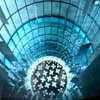
photograph © Robin Hill
Miami Courthouse
Annie Pfeiffer Chapel, Florida Southern College
Frank Lloyd Wright Architect
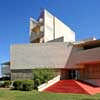
photo © Robin Hill
Florida Southern College
The Girls Club Gallery, Fort Lauderdale
glavovic studio inc.
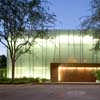
photo © Robin Hill
The Girls Club Gallery
Florida Skyscraper : ten museum park
American Architecture Designs
American Architectural Designs – recent selection from e-architect:
Comments / photos for the Salvador Dali Museum Florida Architecture design by HOK Architects page welcome
Website: thedali.org

